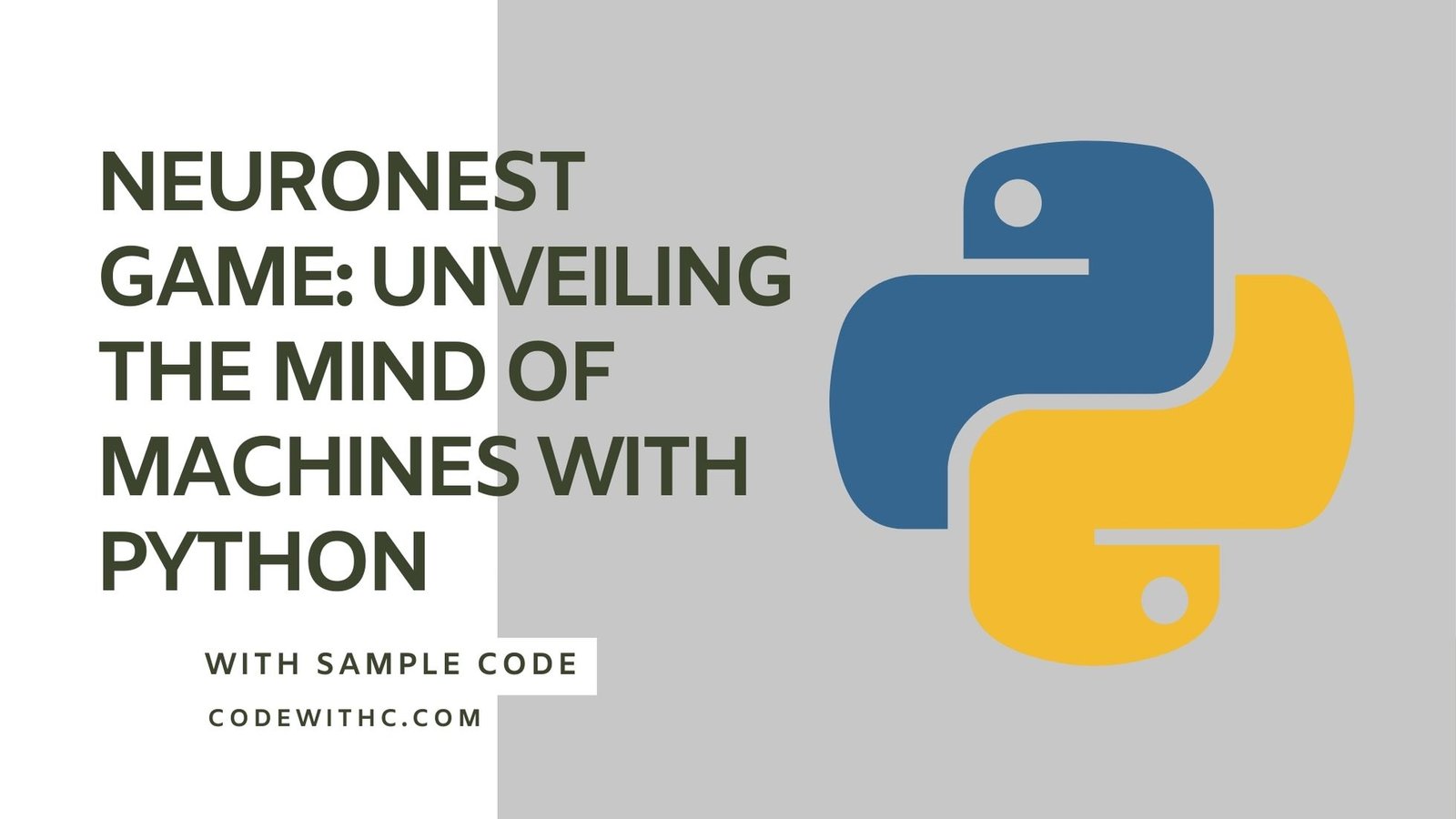In the intricate web of neurons and synapses, intelligence blooms and thoughts take shape. “NeuroNest” opens the doors to this captivating world, allowing you to craft, train, and explore artificial neural networks. With Python and the power of deep learning, you’ll unravel the mysteries of the machine’s mind, one neuron at a time.
The Neural Architecture of NeuroNest
from keras.datasets import mnist
from keras.models import Sequential
from keras.layers import Dense
from keras.utils import to_categorical
# Loading the MNIST dataset
(train_images, train_labels), (test_images, test_labels) = mnist.load_data()
train_images = train_images.reshape((60000, 28 * 28)).astype('float32') / 255
test_images = test_images.reshape((10000, 28 * 28)).astype('float32') / 255
# One-hot encoding the labels
train_labels = to_categorical(train_labels)
test_labels = to_categorical(test_labels)
# Building the neural network
model = Sequential()
model.add(Dense(512, activation='relu', input_shape=(28 * 28,)))
model.add(Dense(10, activation='softmax'))
# Compiling the model
model.compile(optimizer='rmsprop',
loss='categorical_crossentropy',
metrics=['accuracy'])
# Training the model
model.fit(train_images, train_labels, epochs=5, batch_size=128)
# Testing the model
test_loss, test_acc = model.evaluate(test_images, test_labels)
print('Test accuracy:', test_acc)
Decoding the Layers of NeuroNest
- Data Preparation: We utilize the MNIST dataset, a collection of handwritten digits. The data is reshaped and normalized for training.
- Model Construction: A sequential model is created with dense layers. The ReLU activation function is used in the hidden layer, and the Softmax activation function is used in the output layer.
- Training and Testing: The model is trained using the RMSProp optimizer, and its performance is evaluated on the test data.
Expected Insights from NeuroNest
Running this Python script, you’ll experience:
The neural network training over five epochs, gradually improving its accuracy.
A final test accuracy, reflecting how well the model recognizes handwritten digits.
A glimpse into the world of deep learning and neural network design.
Each session with “NeuroNest” is an educational dive into machine learning, deep learning, and artificial intelligence.
The Mind of NeuroNest
Explore the intricacies of “NeuroNest”, where you can tweak the architecture, play with activation functions, and even design your neural networks. It’s a playground for data scientists and AI enthusiasts alike.
Memories from the Neural Frontier
My colleague Sarah and I once spent an entire night fine-tuning a “NeuroNest” model for a hackathon. We experimented with different architectures and finally cracked the code, securing the first place! A true testament to teamwork, creativity, and the power of Python.
In closing, “NeuroNest” isn’t just a coding project; it’s a gateway to understanding the very essence of intelligence, both human and artificial. Dive into the neural networks, learn, experiment, and let your curiosity soar. Till our next neural adventure, keep coding, keep learning! ????
